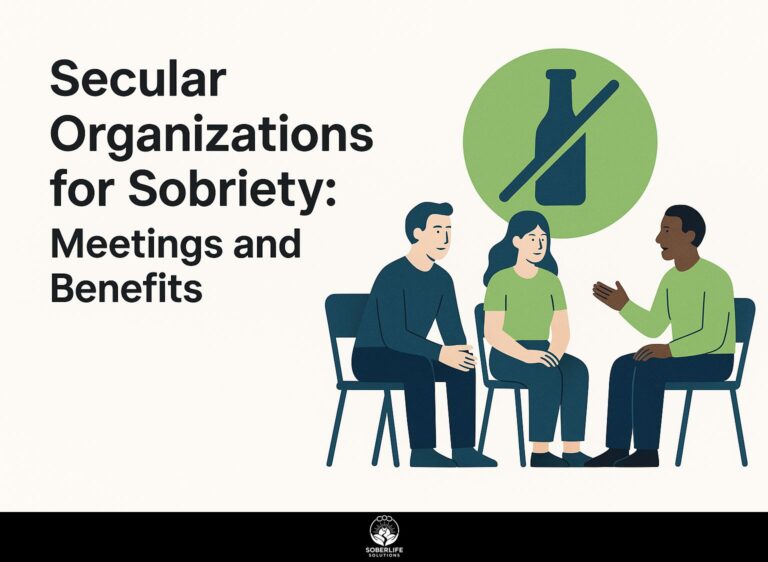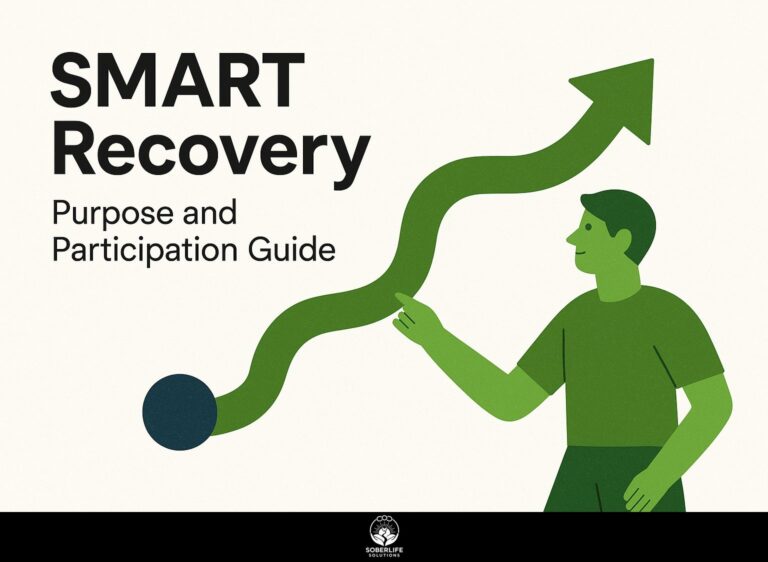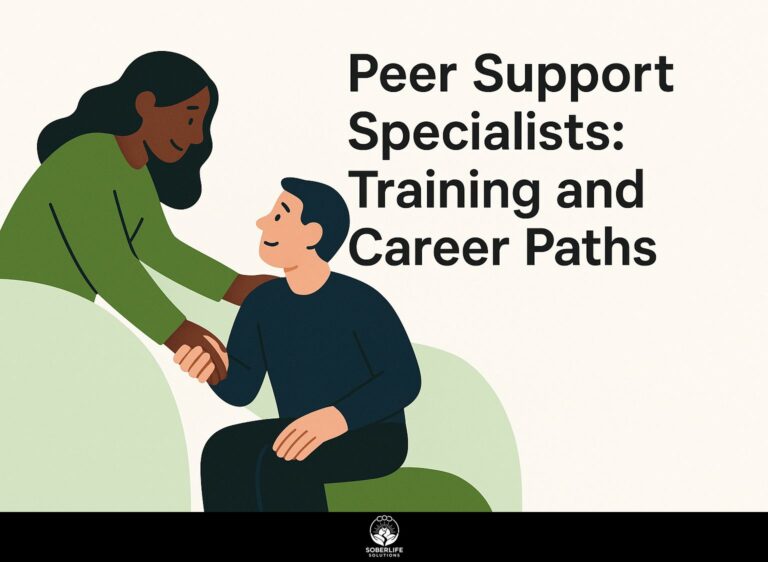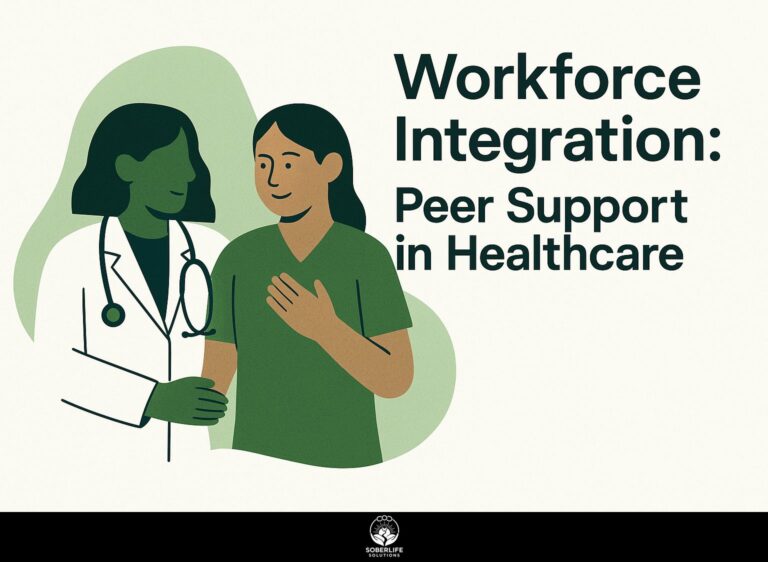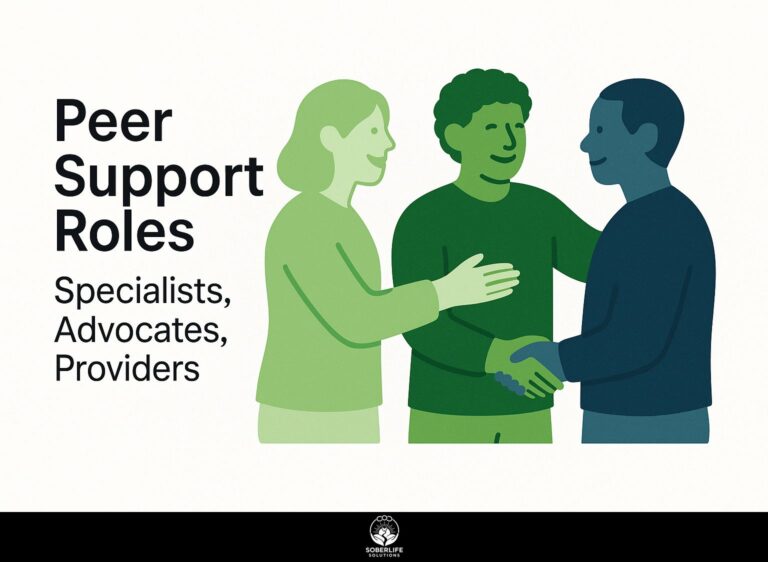Peer Support Groups: Strategies for Networking, Leadership, and Overcoming Challenges

Dealing with health issues can be difficult, but peer support groups provide helpful community support and shared experiences. In different healthcare and community environments, these programs help people to connect, take charge, and address problems together. This article discusses key methods for successful networking, building leadership skills, and dealing with challenges in peer support groups, improving mental health and well-being. Learn how to build strong relationships and succeed in your path toward better health.
Key Takeaways:
Benefits of Peer Support Groups

Peer support groups provide many benefits, especially in offering emotional help and shared experiences for people dealing with similar health problems. As mentioned in our detailed discussion on Peer Support Networks and their Importance for Recovery, these groups play a critical role in fostering a supportive community that aids personal recovery journeys.
Emotional Support
People in peer support groups often say they feel much better emotionally. Research shows that these members become 30% more resilient.
This emotional support mainly grows from trust and honesty among the group members. Members feel comfortable sharing personal experiences, which creates a sense of belonging and validation.
A Johns Hopkins University study found that 65% of participants felt stronger coping skills when they actively engaged in sharing their feelings. Positive feedback loops arise as individuals provide encouragement to one another, reinforcing their sense of community.
As a result, regular meetings strengthen relationships and help improve mental well-being. In fact, Nature highlights how social support significantly enhances these coping mechanisms, emphasizing the crucial role of community bonds.
Shared Experiences
Shared experiences in peer support groups facilitate personal growth, often leading to improved coping strategies and a 25% increase in health service utilization.
Research shows that personal stories can greatly improve how group members understand and validate each other.
Research in the Journal of Health Psychology found that discussing health problems increased feelings of empathy and support, leading people to decide to get medical assistance.
In the same way, telling stories makes mental health topics easier to understand. A community health center’s program showed this by increasing participation by 40% after it started storytelling sessions.
These interactions strengthen relationships, making it a more supportive environment for all participants.
Strategies for Effective Networking

Building relationships in peer support groups increases involvement and creates closer ties within the community. For those looking to leverage these relationships, a deep dive into the importance of peer support networks for recovery can provide valuable insights.
Building Relationships
Building relationships in peer support groups is essential, with studies showing that active engagement leads to a 40% increase in participant retention.
To build these connections, try setting up regular one-on-one meetings, where facilitators can give individual help and motivation.
Arranging group activities, like icebreaker events or brainstorming sessions, builds community and promotes detailed discussions. For example, organizing a monthly creative workshop or a shared meal can help people connect and build trust.
Encouraging participants to share their stories can create stronger connections, as individuals relate to shared experiences, strengthening friendships within the group.
Utilizing Social Media
Using social media can improve outreach and interaction, with platforms like Facebook seeing a 50% rise in people joining health-related groups.
To maximize your social media networking, create dedicated pages for your organization that focus on specific themes, such as caregiving tips or community events.
Share helpful materials like articles, infographics, or videos that connect with your audience. For instance, the Alzheimer’s Association effectively used targeted ads to promote awareness and raise funds, achieving a notable increase in engagement. This approach aligns with insights from a recent publication by Neurology, which highlights the growing importance of social media in health care.
Hold regular Q&A sessions or live updates to build a community, which helps strengthen connections and support.
Leadership in Peer Support Groups

Good leadership is important in peer support groups. It affects how the group interacts and helps build trust and honesty among members. Curious about how to manage and enhance the dynamics of these groups effectively? Our guide explains the key strategies.
Defining Leadership Roles
Groups work better when leadership roles are clearly outlined. Research shows such groups are 30% more productive.
In healthcare delivery, roles such as facilitators and mentors are essential. This concept is detailed in the TeamSTEPPS program by the Agency for Healthcare Research and Quality, which emphasizes the importance of structured team roles.
Facilitators coordinate discussions, ensuring that all voices are heard while keeping the group focused on objectives. For example, a facilitator in a multidisciplinary team meeting might guide doctors, nurses, and administrative staff towards implementing a new patient care protocol.
Mentors, on the other hand, provide support by sharing knowledge and experience, contributing to professional growth. When an experienced doctor guides a less experienced one, it can greatly improve their abilities, leading to better care for patients and stronger teamwork.
These roles help teamwork and create a helpful environment.
Encouraging Participation
Encouraging participation in peer support groups can significantly affect group morale, with a 35% increase in engagement reported when participants feel valued.
To encourage involvement, try these methods:
- Rotate leadership positions frequently so each person gets a chance to lead.
- Actively solicit feedback through anonymous surveys.
- Celebrate milestones, such as group anniversaries or individual achievements.
For example, a peer support group for caregivers saw a 50% uptick in attendance after introducing monthly recognition events where members shared successes. This helped create friendships and motivated newcomers to talk about their experiences.
Using these methods can make the environment more welcoming, leading to higher engagement.
Overcoming Common Challenges

Peer support groups may encounter typical problems that, if ignored, can reduce their success. It’s important to manage these issues actively; however, understanding the role and significance of these groups can make a big difference. Learn more about the importance of peer support networks in fostering a successful recovery process.
Managing Conflicts
Conflict management is essential, as unresolved conflicts can lead to a 20% drop in group attendance and participant satisfaction.
One useful method is active listening, where people rephrase each other’s ideas to confirm they understand.
Mediation serves as another powerful method, involving a neutral party who helps facilitate discussions.
For example, in a community group facing discord over project priorities, implementing these techniques led to open communication, allowing members to express concerns and collaboratively establish group norms.
This shift resulted in a 30% increase in attendance at subsequent meetings, demonstrating the significant positive impact of structured conflict resolution strategies.
Maintaining Engagement
Keeping people involved in peer support groups is important; surveys show that groups with regular activities keep 40% more participants.
- To increase participation, try using different meeting styles like workshops, social gatherings, and themed discussions.
Regular check-ins can also be beneficial; schedule brief updates at the beginning of each meeting to share personal milestones or challenges.
Having guest speakers on relevant topics adds to the learning experience and sparks renewed interest.
For instance, bringing in a mental health professional can encourage more meaningful discussions and offer useful knowledge, while co-facilitating meetings can help create a feeling of shared responsibility in the group’s development.
Frequently Asked Questions
What are some common strategies for networking in peer support groups?
Some common strategies for networking in peer support groups include attending events and conferences, joining online communities and forums, and reaching out to individuals and organizations with similar interests.
How can peer support group leaders effectively manage and lead their groups?
Some tips for effective leadership in peer support groups include setting clear goals and expectations, actively listening to group members, and promoting a supportive and inclusive atmosphere.
What are some challenges that may arise in peer support groups, and how can they be overcome?
Challenges in peer support groups may include conflicts between group members, difficulty in maintaining group cohesion, and struggles in finding and maintaining a suitable meeting space. These challenges can be solved with open and respectful communication, setting clear rules and limits, and looking for different places to meet.
What are the advantages for someone joining a peer support group to get help?
Joining a peer support group can give people a feeling of belonging, acceptance, and recognition. It can offer helpful advice and knowledge from people with similar experiences, as well as a secure place to talk about personal challenges and achievements.
How can individuals become more involved in the leadership and organization of a peer support group?
Individuals can become more involved in peer support group leadership by volunteering for roles such as event planning, facilitating meetings, or organizing support and resources for group members. They can share their skills and knowledge to make the group’s work and communication better.
Are there any specific networking strategies that may be helpful for individuals who are part of a peer support group?
Some networking strategies that might be useful for people in peer support groups include actively looking for connections and resources, being willing to learn from others, and taking the initiative to contact and build relationships with fellow group members and organizations.

